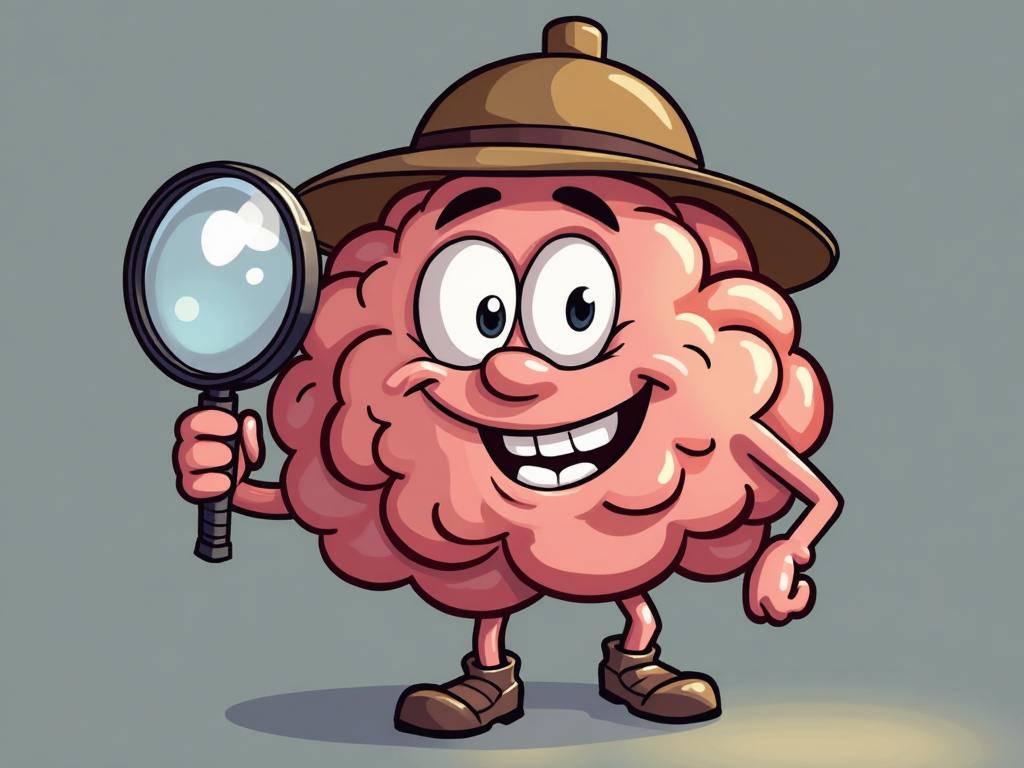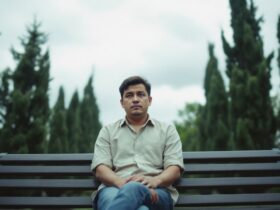My student Emma sat at her desk for two hours, scared to start her science project. “I keep thinking about everything that could go wrong,” she told me. “What if my project isn’t good enough? What if the other kids laugh?”
Emma was stuck in overthinking—when your mind spins and spins with worry but doesn’t help you move ahead. Many kids feel this way! The good news is that there’s a better way to use your brain. It’s called critical thinking.
Think of it this way: Overthinking is like riding a bike in circles in your driveway. You use up all your energy, but you don’t get anywhere. Critical thinkers approach problems with a clear purpose and logical methods, contrasting this with overthinking, which is driven by emotional turmoil and lacks direction. Critical thinking is like riding your bike down a path to get somewhere fun—you look ahead, make smart choices about where to turn, and end up where you want to go.
That day, I taught Emma how to turn her worried thoughts into helpful ones. Instead of thinking, “What if everything goes wrong?” she learned to ask, “What’s my first step?” and “How can I solve problems if they come up?” Emma had a clear plan by the end of our talk and felt ready to start.
Would you like to learn how to turn worries into wisdom like Emma? Let me show you how your brain can become your best friend instead of your most significant worry machine.
What Makes Good and Bad Critical Thinking Different?

Let me break this down in a way that’s easy to understand:
Critical thinking is when you use your brain like a detective. You look at facts, ask good questions, and work step by step to figure things out. Say you’re picking what to eat for lunch—you think about what foods give you energy, what you like, and what’s in your lunchbox. Then you make a wise choice.
Overthinking is when your brain gets stuck, like a car spinning its wheels in mud. You think about the same things over and over without getting anywhere. Maybe you spend so much time worrying about which sandwich to pick that your lunch period ends before you eat anything!
When you use critical thinking, you:
Look at the facts
Think about what makes sense
Make choices based on good reasons
When you get stuck overthinking, you:
Keep worrying about the same thing
Find it hard to make any choice
Get stressed and tired
My friend Jake said: “When I do my math homework, if I use critical thinking, I work on one problem at a time and check my answers. But when I overthink, I stare at the page and worry so much about getting it wrong that I don’t even start!”
The big difference is that critical thinking helps you move forward and solve problems, while overthinking keeps you stuck. Learning to tell these two things apart is super important—it’s like having a superpower that helps you make better choices!
Understanding Critical Thinking

Critical thinking is like being a detective in your own mind. It’s a disciplined process where you actively think about and evaluate information. Imagine you’re solving a mystery: gather clues, ask questions, and piece the evidence together. This is what critical thinking does for your brain. It helps you look at problems from different angles, question your assumptions, and develop creative solutions.
For example, if you decide which book to read next, you might consider what genres you enjoy, read reviews, and ask friends for recommendations. This way, you make an informed choice rather than just picking the first book you see. Critical thinking encourages you to be objective, think creatively, and solve problems effectively. It’s like having a superpower that helps you navigate complex situations and make smart decisions.
The Key Difference Between Critical and Over Thinking
The key difference between critical thinking and overthinking lies in their outcomes. Critical thinking is like following a recipe to bake a cake: you have a clear plan, follow steps, and end up with a delicious result. Overthinking, on the other hand, is like worrying so much about the cake burning that you never put it in the oven.
Critical thinking is structured and purpose-driven. It helps you define problems, analyze evidence, and consider alternatives. For instance, critical thinking lets you plan your steps, gather information, and present your findings if you’re working on a school project. Overthinking, however, is unstructured and emotionally charged. It leads to analysis paralysis, where you get stuck worrying about every little detail and can’t make a decision. This drains your emotional energy and fills your mind with negative thoughts.
When Your Brain Goes Into Analysis Paralysis
Your brain is like a car engine. When you use it right, it takes you where you need to go. But overthinking is like pressing the gas pedal while stuck in a park—your engine runs super hot, but you stay in the same spot!
Being overly self-critical can exacerbate the negative effects of overthinking, leading to increased anxiety and stress.
Here’s what happens when overthinking takes over:
Your Body Gets Tired
Sarah told me she gets headaches when she can’t stop thinking about her test scores.
Tom said his stomach hurts when he worries too much about making the soccer team.
Many kids have trouble sleeping because their minds won’t quiet at night.
You Miss Out on Fun Things
Maria skipped the school play because she spent too much time thinking about everything that could go wrong.
Alex was so busy worrying about making mistakes that he didn’t join the science fair.
Josh was late to baseball practice because he checked his bag ” once more.”
Your Brain Gets Stuck
You spend so much time thinking about what could go wrong that you don’t try new things.
You keep telling yourself, “I can’t do this” instead of giving it a shot
Your mind fills up with negative thoughts that make you feel bad
Remember what my student Carlos said: “When I stopped spending three hours picking my outfit for school, I finally had time to eat breakfast and chat with my friends!” Sometimes, thinking less means living more!
The Consequences of Overthinking
Overthinking can have serious consequences on your mental and physical health. It’s like carrying a heavy backpack all day—you get tired, stressed, and can’t enjoy the things you love. Overthinking can lead to increased stress levels, anxiety, and even physical symptoms like headaches or trouble sleeping.
For example, if you constantly worry about past mistakes, you might find it hard to focus on your current tasks. This can lead to procrastination and missed opportunities. Overthinking creates a cycle of negative thoughts that can be hard to break free from. It’s important to recognize when you’re overthinking and take steps to manage it so you can live a happier, more productive life.
Your Brain is Like a Supercomputer—Learn to Use It!

Meet my student Miguel. One day, he wanted to buy new shoes with his birthday money. Instead of grabbing the first flashy pair he saw, he did something cool. He:
Checked his money
Looked at different shoes
Thought about what he needed them for (school and sports)
Asked other kids about which shoes last the longest
Reflecting on your own thinking can help you identify patterns and improve your decision-making process.
That’s critical thinking in action! Miguel made a wise choice because he used his brain power correctly.
Critical thinking helps you:
Be a Truth Detective
Lucy learned to spot fake news about animals by checking if stories came from real scientists.
When Ben heard a rumor about a new video game, he looked up actual
facts before telling his friends.
Solve Tricky Problems
Rosa figured out how to fit art club and basketball into her schedule by writing down all her times.
David found a new way to remember his spelling words by making funny stories about them.
Know Your Mind
Jasmine realized she only wanted to take dance class because her friend did—she loves soccer!
Kevin learned to ask himself, “Why do I think that?” when he makes quick choices.
My student Ana says it best: “When I take time to think about things instead of just going with the crowd, I make choices that make me happy!”
Remember: Your brain is one of the most amazing tools you’ll ever have. Learning to use it well helps you make better decisions every day!
The Thinking Process: A Systematic Approach
The thinking process is like building a puzzle. You start with the edges, gather the pieces, and slowly combine them to see the whole picture. This systematic approach helps you solve problems and make decisions effectively.
First, define the problem clearly. For example, if you’re trying to decide which after-school activity to join, consider what you enjoy and what fits your schedule. Next, gather relevant information and analyze the options. Consider multiple perspectives and evaluate the pros and cons of each choice. Use logical reasoning to weigh the evidence and manage any negative emotions.
By following this disciplined process, you can develop critical thinking skills and avoid analysis paralysis. You’ll be able to make informed decisions and solve problems more effectively, just like a skilled detective piecing together clues.
How Your Brain Engages in Problem Solving
Thinking critically is like building with LEGO blocks. You need different pieces that fit together to make something awesome! Let me show you how it works.
Meet Joey. He needed to do a book report but didn’t know where to start. Here’s how he used his brainpower:
First Look
He read the book carefully
He wrote down the main parts
He picked out essential details
Putting It Together
He connected the story parts like puzzle pieces
He found patterns in how characters acted
He saw how the beginning and end linked up
Making Smart Choices
He asked himself, “What does this mean?”
He looked at the story from different sides
He chose the most important things to share
Joey says, “It’s like being a detective! I look for clues, assemble them, and solve problems one step at a time.”
The cool thing about critical thinking is that it helps you break big jobs into smaller pieces. Instead of saying, “This is too hard!” you can say, “What’s my first step?” Just like Joey did with his book report!
Remember: Good thinking isn’t about being super bright—it’s about using your brain step by step to figure things out.
Cool Brain Tricks to Combat Negative Thoughts!
Want to get better at thinking like a pro? Here’s what my student Riley learned to do to improve her thought process:
Take Brain Breaks
When Riley feels her mind racing, she stops and takes five deep breaths
She says: “It’s like pressing a pause button on my worries!”
This helps her stay focused on what’s happening right now
Make a Game Plan
Riley writes down one main thing she wants to do each day
She breaks big jobs into smaller steps
This stops her from getting stuck on worrying about everything at once
Set a Thinking Timer
When Riley has a problem, she gives herself 10 minutes to think about it
After that, she either takes action or moves on to something else
This keeps her from spending all day thinking about one thing
Listen to Other Kids
Riley asks her classmates how they would solve a problem
Sometimes, they have ideas she never thought of
This helps her see things in new ways
My favorite part was when Riley told me, “Now, instead of worrying about everything, I pick one thing to work on. It makes my brain feel lighter!”
These tricks aren’t magic; they’re tools that help you use your brain better. Just like you practice sports or music, you can practice good thinking!
Your Brain’s Best Friend: A Journal
A journal can be your brain’s best friend regarding critical thinking and problem-solving. Think of it as a place to unload and sort your thoughts. Reflective journaling helps you document your thought processes, analyze different perspectives, and identify patterns and biases.
For example, if you’re overwhelmed by a big project, writing down your thoughts can help you break them into smaller, manageable steps. Journaling allows you to process and release negative emotions, gain clarity, and develop a more critical and reflective mindset. It’s like conversing with yourself, where you can explore your ideas and find solutions.
Your journal can also serve as a tool for self-reflection, helping you identify improvement areas and develop personal growth strategies. So grab a notebook and start writing—your brain will thank you!
Your Brain’s Best Friend: A Journal
Meet my student Zack. He used to keep all his thoughts bouncing around in his head like bouncy balls in a tiny room! Then, he learned about keeping a thinking journal. Now he writes his thoughts down, and guess what? His head feels much clearer!
Here’s what Zack writes in his journal:
What Happened Today
He writes down the good stuff and the tricky parts
This helps him see things better, like looking at a photo instead of trying to remember it
Zack says: “When I write things down, they stop swimming around in my head!”
How He Feels
Sometimes he’s happy, sometimes he’s worried
Writing helps him understand why he feels specific ways
He can tell the difference between real problems and worry thoughts
What He Learns
He spots patterns in how he thinks
He sees what works and what doesn’t
This helps him make better decisions next time
Zack shared his favorite journal trick: “When I’m stuck on a problem, I pretend I’m writing advice to a friend. It helps me think more clearly!”
You don’t need fancy words or perfect handwriting. Just grab a notebook and start writing what’s on your mind. Your journal is like a friend who always listens and helps you think better!
Learning From Others Makes Your Brain Grow!

Something amazing happened last week in my class. We were building a model city, and everyone had different ideas about what makes a perfect town.
Maya considered parks because she loves nature. Tony focused on bike paths because he rides everywhere. Sam wanted lots of libraries because books were his favorite things. At first, they didn’t agree!
But then they did something smart:
They listened to each other’s ideas
They asked questions to understand why each person liked their idea
They learned new things they hadn’t thought about before
Pretty soon, they came up with a better plan than anyone’s first idea. They made a city with:
Parks with reading spots
Bike paths that go through nature
Little free libraries near the playgrounds
As Mia said: “When I stopped thinking I had all the answers and started listening to others, I got so many new ideas! Now I always ask my friends what they think.”
Think about it: Every person you meet knows something you don’t. When you listen to others, you:
Learn new ways to solve problems
See things from different sides
Make better choices
Make new friends!
Remember what my student Kai says: “Different doesn’t mean wrong – it just means there’s more to learn!”
Your Brain Power: Use It Well!
Now you know the big secret: Your brain works best when you think things through without worrying! Let’s look at what we learned:
Good thinking is like walking on a path:
You look where you’re going
You take one step at a time
You keep moving forward
Bad thinking is like walking in circles:
You go over the same ground again and again
You get tired but don’t get anywhere
You miss out on fun things ahead
The good news? You can train your brain! Try these tricks:
Write in a journal
Take quiet moments to clear your head
Ask friends what they think
Make simple plans
Take action instead of just worrying
Remember Emma from the beginning? She finished her science project and got an excellent grade. But more importantly, she learned how to use her brain power better. You can, too!
As my student Leo says: “Now, when I have a problem, I don’t let my worries boss me around. I think about it, plan, and do something about it!”
Your brain is fantastic. When you learn to use it well, you can do anything!







Find Us on Socials